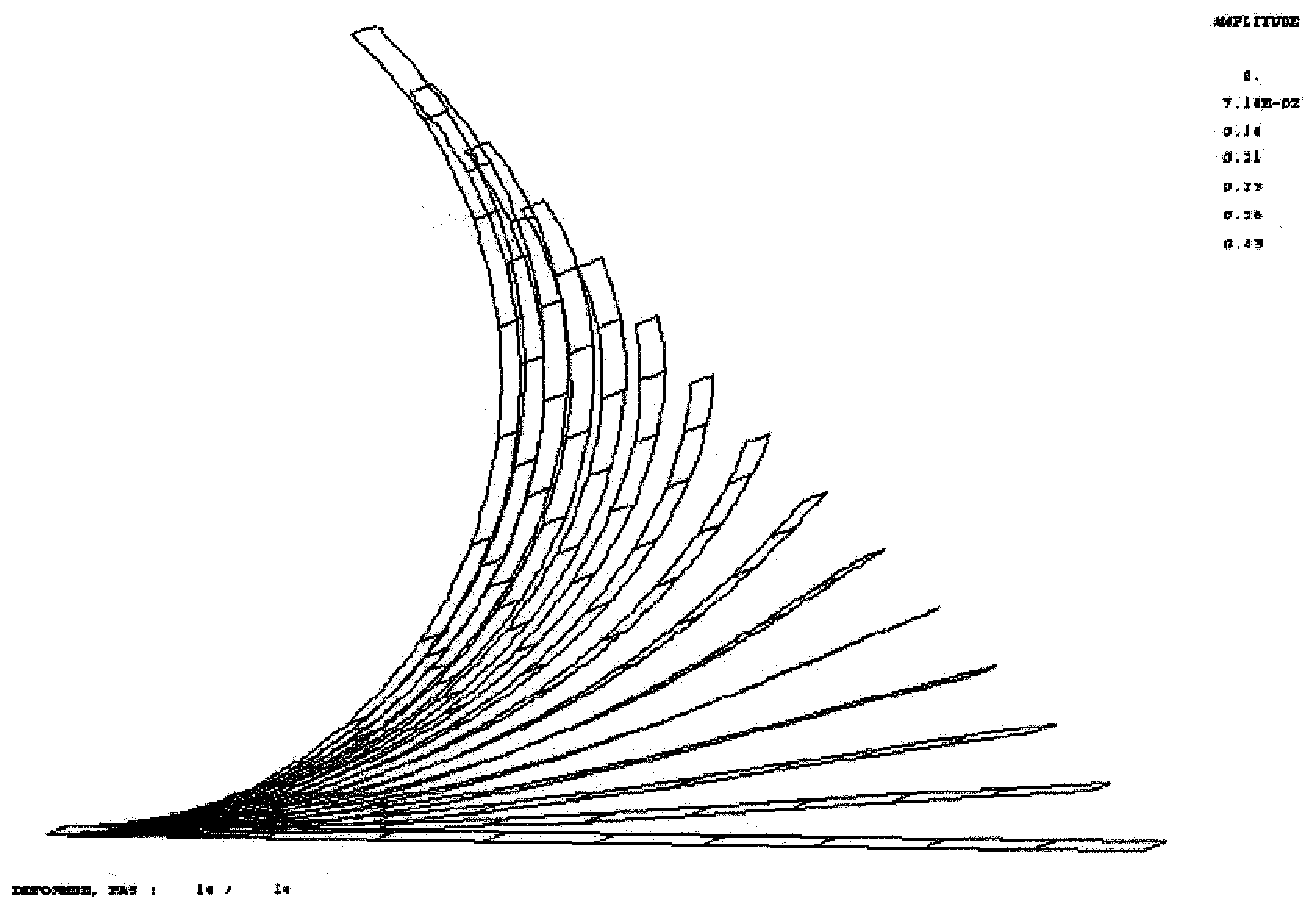3. Modeling A#
3.1. Characteristics of modeling#
Modeling COQUE_3D
3.2. Characteristics of the mesh#
Number of knots: 54
Number of meshes and type: 10 QUAD9 and 1 SEG3
3.3. Tested sizes and results#
The incremental analysis is carried out in the pseudo-time interval \(\mathrm{[}\mathrm{0 }\mathrm{:}2.4\mathrm{]}\) in fourteen load steps.
3.3.1. History of horizontal rotation \(\text{DRY}\) at loaded nodes#
Instant |
Couple \(m\) |
Reference Type |
Referral Type |
Reference \(\mathit{DRY}\) (radians) |
Tolerance (%) |
0.6 |
“ANALYTIQUE” |
—0.6000E+00 |
|||
1.2 |
120 |
“ANALYTIQUE” |
—1.2000E+00 |
0.1 |
|
1.8 |
180 |
“ANALYTIQUE” |
“” |
—1.8000E+00 |
|
2.4 |
240 |
“ANALYTIQUE” |
—2.4000E+00 |
0.1 |
3.3.2. History of horizontal displacement \(\text{DX}\) at loaded nodes#
Instant |
Couple \(m\) |
Reference Type |
Reference |
Tolerance (%) |
0.6 |
“ANALYTIQUE” |
—5.8929E-01 |
0.1 |
|
1.2 |
120 |
“ANALYTIQUE” |
—2.23300E+00 |
0.1 |
1.8 |
180 |
“ANALYTIQUE” |
—4.58973E+00 |
0.1 |
2.4 |
240 |
“ANALYTIQUE” |
—7.18557E+00 |
0.1 |
3.3.3. History of vertical displacement \(\text{DZ}\) at loaded nodes#
Instant |
Couple \(m\) |
Reference Type |
Reference |
Tolerance (%) |
|
0.6 |
“ANALYTIQUE” |
2.91107E+00 |
0.1 |
||
1.2 |
120 |
“ANALYTIQUE” |
“” |
5.31368E+00 |
0.1 |
1.8 |
180 |
“ANALYTIQUE” |
6.81778E+00 |
0.1 |
|
2.4 |
240 |
“ANALYTIQUE” |
7.23914E+00 |
0.1 |
Below is a visualization of the deformation during the 14 load steps:

3.3.4. notes#
We use COEF_RIGI_DRZ = 0.001. The value of the angle of rotation reached is 135 degrees.